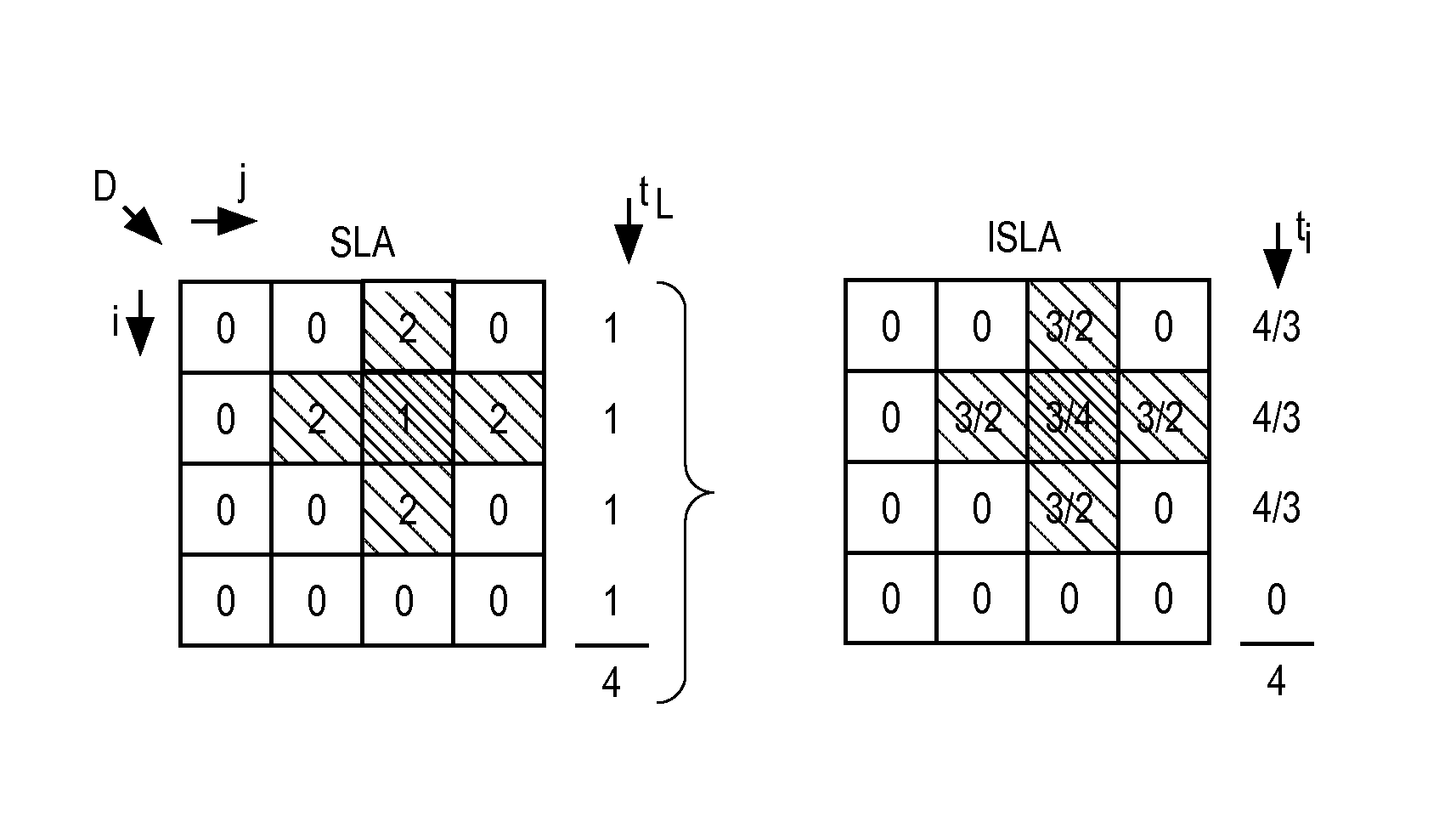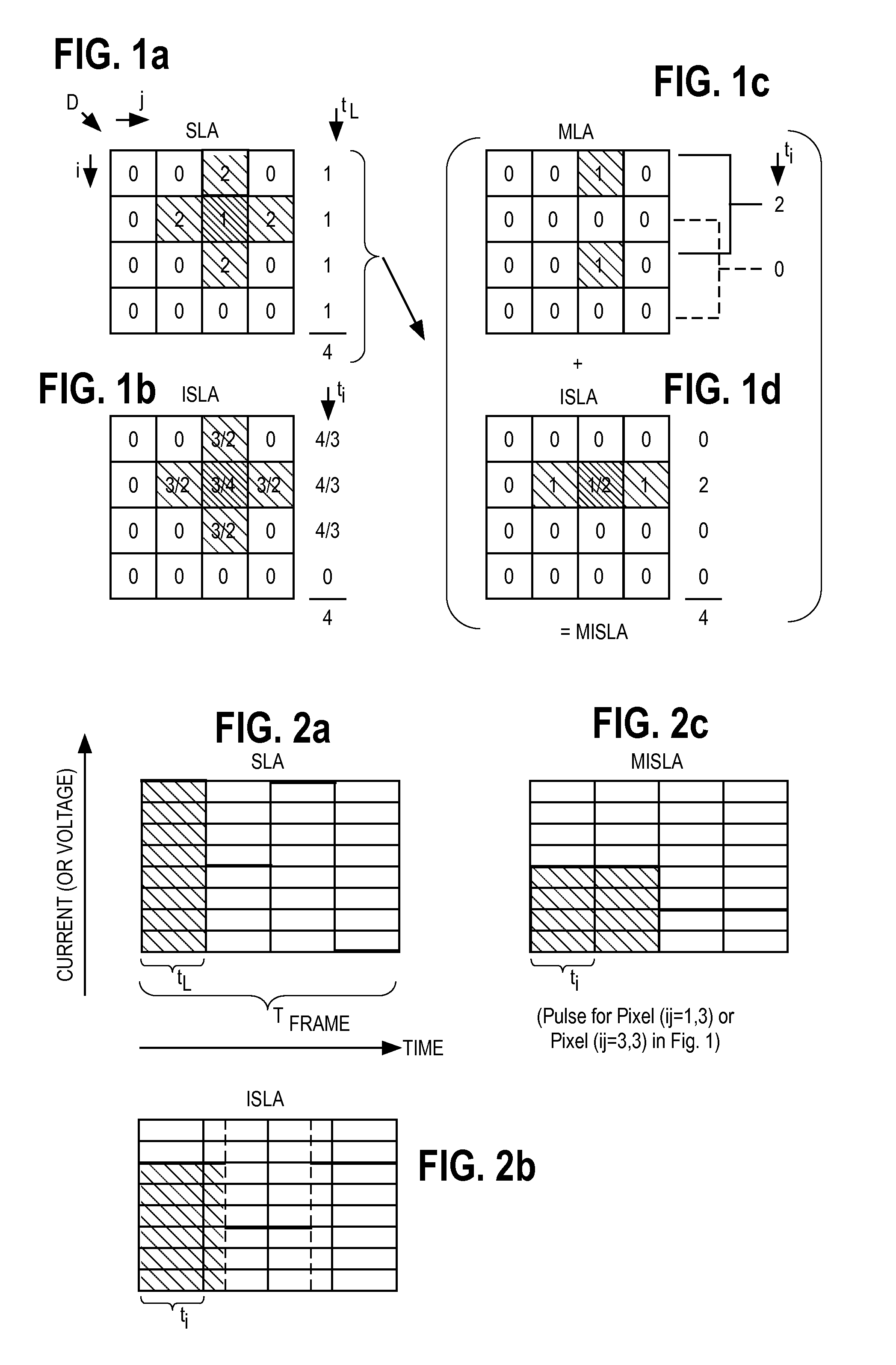Method for driving matrix displays
a matrix display and display technology, applied in the field of driving matrix displays, can solve the problems of increasing power consumption, short application time of the operating current, and significant reduction of the lifetime of the oled, so as to improve the performance of any matrix display and increase the life of the oled display
- Summary
- Abstract
- Description
- Claims
- Application Information
AI Technical Summary
Benefits of technology
Problems solved by technology
Method used
Image
Examples
Embodiment Construction
[0057]FIG. 1 schematically shows a matrix display D which is made up of four rows i and four columns j. The matrix display D correspondingly has a total of sixteen pixels ij which are to have the brightness Dij. Each pixel ij is represented by a square in which the digital brightness value Dij is entered as a number. The brightness value “0” stands for a dark pixel ij, the brightness value “1” stands for a dimly luminous pixel ij and the brightness value “2” stands for a brightly luminous pixel.
[0058]FIG. 1a therefore shows a matrix display D on which a cross can be seen, with a dim centre in the pixel ij=23 and four bright pixels at its arcs. In conventional single-line addressing (SLA) the matrix display D is driven in such a manner that the rows one to four are activated consecutively in each case for a constant row addressing time tL which is given by the value “1” in arbitrary units. While the first row is being activated, an operating current I is applied to the third column, ...
PUM
 Login to View More
Login to View More Abstract
Description
Claims
Application Information
 Login to View More
Login to View More - R&D
- Intellectual Property
- Life Sciences
- Materials
- Tech Scout
- Unparalleled Data Quality
- Higher Quality Content
- 60% Fewer Hallucinations
Browse by: Latest US Patents, China's latest patents, Technical Efficacy Thesaurus, Application Domain, Technology Topic, Popular Technical Reports.
© 2025 PatSnap. All rights reserved.Legal|Privacy policy|Modern Slavery Act Transparency Statement|Sitemap|About US| Contact US: help@patsnap.com



